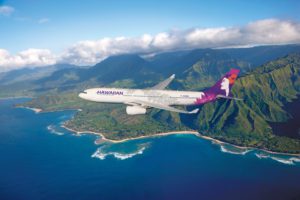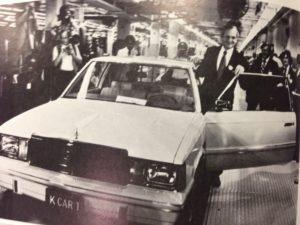 Is the 747 on the way out? We hope not. Please no.
Is the 747 on the way out? We hope not. Please no.
When British Airways announced that it was buying two new long-range airplanes on Thursday, Sept. 27, 2007, it was good news for the Boeing 787 Dreamliner program and the Airbus A380 double decker. BA will buy $8.2 billion in aircraft, including 12 Airbus 380s and 24 Boeing 787s. But, as the Financial Times reported, it was a bit of a blow to Boeing, who had hoped to sell the airline a revamped version of the 747, the Boeing 747-8.
Smidgen of good news; Lufthansa has some 747-8s on order, and the company is still promoting the future of the plane for passengers and freight. It recently ran full-page ads in the Financial Times promoting the fact that it is already welcome at airports, a dig at the new Airbus.
There is even a 747-8 company jet, detailed in James Wallace’s Seattle Post-Intelligencer blog. So there is no danger right now of 747s going away, but to keep something around, you have to plan early in case there is a day 10 years down the road when these gorgeous things are only used by charter and cargo airlines. This is not a new idea; The Washington Post wrote the story in 2005.
Boeing is committed to the B-747 program, because, frankly, they are cool. Readers of this blog should know that we here at BrandlandUSA are sappy nostalgia buffs who often, and sometimes irrationally, value things that are interesting, even though these things don’t always make perfect financial sense.
There is a method to this; so much of what we buy in our world is a commodity, and the only thing that makes a commodity not a commodity is how it is operated and positioned. So irrational is rational. Another reason why we are interested is that while most would feel Boeing is the “brand,” Boeing is merely a company brand. A consumer (insert airline procurement manager) would not buy a Nabisco, he would buy a Nabison Chips Ahoy. So 747 is part of what makes Boeing.
Slowly but slowly, America’s airlines have dropped the 747. Thankfully, there is still Northwest, which has operated the 747 since 1970, and has 16 747-400s that operate on the Pacific. And there is United, which has 30 747-400s.
A few have been preserved, including Francie Rehwald’s salvaged Tower Air 747 that will turn into a house. There is also a Royal Dutch KLM 747 that will be part of the Aviodrome theme park in the Netherlands. Give it up to the Europeans for appreciating one of the greatest American inventions ever!
What should be done?
- Change the question. The question is not can the 747 survive. The question is what are the core brand values of the Jumbo Jet, and how can those values be preserved under the 747 moniker? Luckily, passengers don’t know that a current 747 is quite different, technically, from a 1970 jet. But they do remember the upper deck, the double aisles, the four engines, the massive size and the shape. If all those things survived under a 747 name, then the brand would survive.
- Reposition the marketing. We can’t presume to tell Boeing about technology (and feel quite bold telling them about marketing), but we do think there is value in Boeing, in conjunction with the airlines that still use the 747, doing some sorts of promotions to tell passengers that the 747 is roomy, proven safe and the most stylish way to get somewhere. Not a big investment, but a strategic one. Basically, it would be mass market Concorde approach. Remember, people paid thousands to travel on a cramped little tube Concorde across the Atlantic. These airplanes were REALLY old when then stopped flying, but they still had appeal. While the time factor was important, what people loved was the fact that they felt like they were really flying, and the whole dang thing was just SO stylish. John Travolta can help with this one (tell John that the Douglas Commercial brand will be back and he might even bring Kelly and the Jett and the crew to a promo).
- Promote the upper deck lounge. Most middle class American chumps have never been “upstairs” and would pay dearly for dinner there. So, perhaps a $1,000 trans-Atlantic round trip could be bumped up $150 more if dinner seatings were arranged in shifts on a mostly business and first class flight. Certainly, United could justify a few of these routes. Remember, the upstairs only holds about 25 seats, so if these “tables” were turned among the business class who wanted to pay extra it would not only relieve cramped feelings, but open up the main cabin with a few empty seats facing each other. If these tables turned four times, it would be some additional revenue. Of course, that might mean a few less seats, but perhaps these could be used elsewhere.
- Quietly promote the four engines. The 747 has four engines, rather than two. Many people fear flying. While not rational, four engines is an important selling factor. But do it carefully as most airlines only have two-engine planes across the Atlantic.
- Save some early planes. Boeing should see to it that there is an early 747 at the Smithsonian’s Udvar-Hazy. Sadly, many of the early Pan Am 747s are gone. This is a national tragedy. While the Boeing 707 at Dulles is an invaluable artifact, the 747 is not there. It, more than the 707, the 747 changed flight forever, bringing in ultra-long distances and the idea of tons of people on one plane at one time. Also, the 707 at Udvar is a technology artifact that people cannot go inside. The genius of the Eastern DC-3 at the Smithsonian Air & Space Museum on the Mall is that you can see inside it and experience the logos, branding and marketing, which is a critical part of any product’s real-life history.
- Work with United and Northwest: These folks are the only American operators of the plane, and there is added brand appeal to the 747 with an American flag carrier operating an American plane. While its fun riding Lufthansa 747 (and the service is probably better) the connection with the flag gives it a new level of patriotic appeal. This matters.
- Use the 747 less. Airlines should realize that not all of the fleet has to be used 18 hours a day. Efficiency is having older aircraft that are paid for, available, clean and used, perhaps for a few less hours a day. These extras can help to balance out fleets during storms and other calamities, and would be popular on higher margin flights that could be only business and first class. Northwest is comfortable with this with its DC-9s, which seem to fly forever. This is particularly valuable with long-distance routes, which need more time for meals and cleaning and can’t get away with being Greyhound buses in the sky.
BrandlandUSA Rule
Sometimes it costs more. Sometimes doing things for seemingly irrational reasons is a bit more expensive. But if it differentiates the brand and makes for extra sales, these idiosyncratic expenditures can be worthwhile because they set your company ahead of the other generic marketing approaches.








